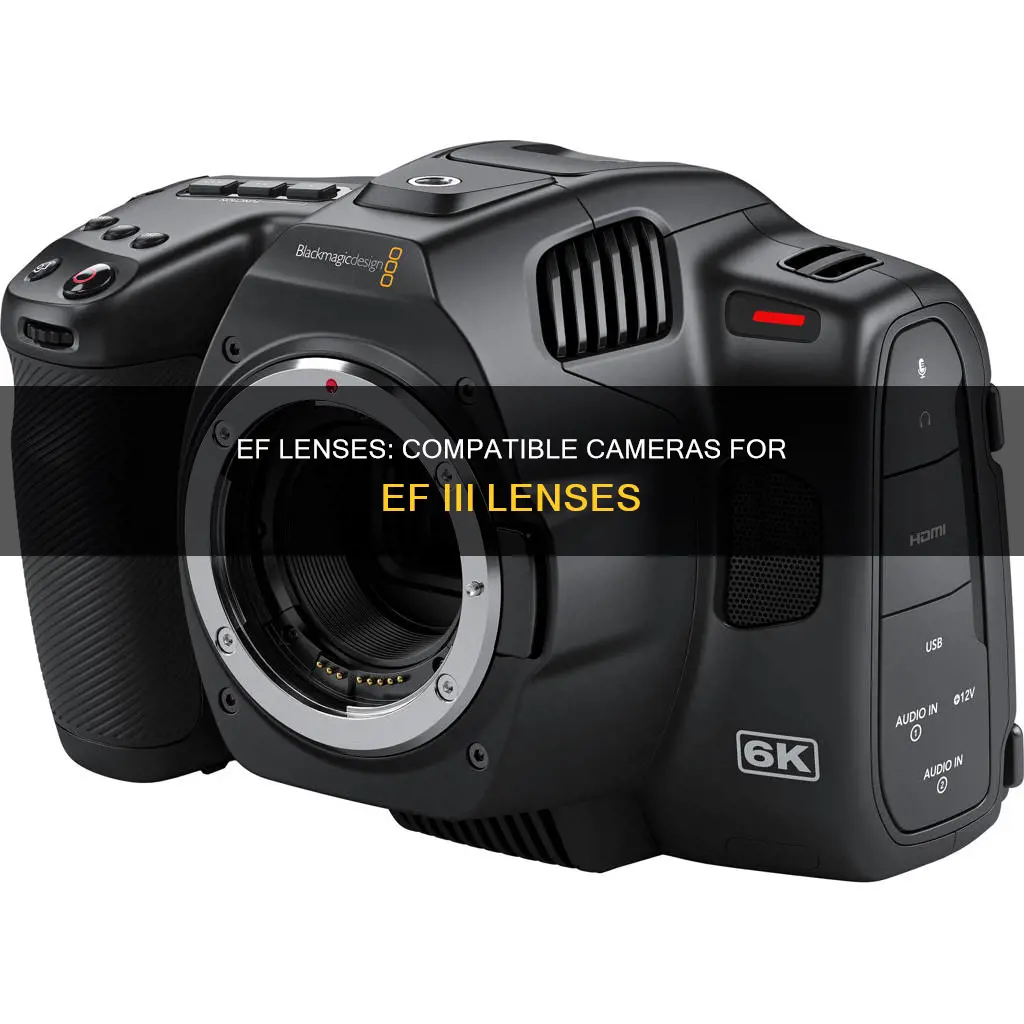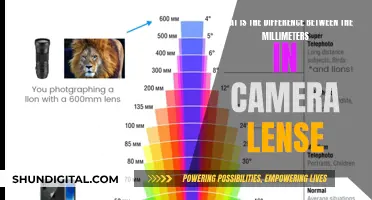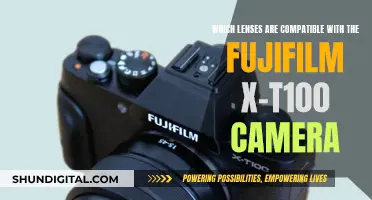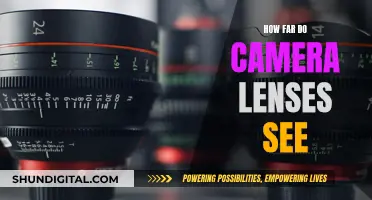
Canon's EF lens mount is the standard lens mount for the Canon EOS family of SLR film and digital cameras. EF stands for Electro-Focus, which means that automatic focusing on EF lenses is handled by a dedicated electric motor built into the lens. The EF lens mount was introduced in 1987 with the launch of the EOS system, and any camera in this range will be compatible with EF lenses.

Canon EF lens mount
The EF lens mount is the standard lens mount for the Canon EOS family of SLR film and digital cameras. EF stands for "Electro-Focus", with automatic focusing on EF lenses handled by a dedicated electric motor built into the lens. The EF mount was introduced in 1987 and features a bayonet-style mount. All communication between the camera and the lens is electrical, with no mechanical levers or plungers. The mount has a 54mm internal diameter, the largest among all 35mm SLR cameras at the time.
The EF series includes over eighty lenses, with focal lengths from 8mm to 1200mm. Many EF lenses include features such as Canon's ultrasonic motor (USM) drive, an image stabilisation system (IS), and diffractive optics (DO). The large diameter and relatively short flange focal distance of 44mm allow for the mechanical adaptation of EF camera bodies to non-EF lenses, such as those with Nikon F, Olympus OM, and Leica R mounts.
EF mount lenses are compatible with newer Canon bodies, though the same is not true in reverse. EF-S lens mount cameras can mount EF lenses without an adapter, and EF-M lens mount cameras can use EF lenses with an EF-EOS M adapter.
Canon EF lenses have a range of controls, switches, and features, including:
- Focusing ring
- Zoom ring
- Distance scale window
- Focus mode switch
- Image stabilizer switch
- Autofocus stop buttons
- Focus preset
- Filter mounting
- Lens hood mount
- Tripod collar
Third-party lenses with the EF lens mount are manufactured by Yongnuo, Samyang, Schneider, Sigma, Tamron, Tokina, Cosina, and Carl Zeiss.
Protecting Your Camera Lenses: Tips for Longevity
You may want to see also

Canon EOS camera
The Canon EF lens mount was introduced in 1987 with the launch of the EOS system. The EF stands for "Electro-Focus", meaning that automatic focusing is handled by an electric motor built into the lens. The EF mount is the standard lens mount on the Canon EOS family of SLR film and digital cameras.
The EF mount replaced the FD mount, which used a motor in the camera body to drive the mechanics of the focus helicoid in the lens. The EF mount, on the other hand, features a motor inside the lens itself, allowing for autofocusing lenses that only require electrical contacts to supply power and instructions to the lens motor.
- EOS APS-C R System or EOS Full-frame R System mirrorless: identified by a red line on the lens mount.
- EOS APS-C DSLR: identified by a red circle and a white square on the lens mount.
- EOS full-frame DSLR: identified by a red circle on the lens mount.
- EOS M series APS-C mirrorless: identified by a white circle on the lens mount.
The EF lens mount is compatible with every EOS camera ever produced, including the EOS R System and EOS M series when used with the appropriate lens adapter.
The Canon EF-S lens mount, released in 2003, is a derivative of the EF lens mount. It was created for some Canon digital single-lens reflex cameras with APS-C-sized image sensors. Cameras with the EF-S mount are backward compatible with EF lenses. However, EF-S lenses cannot be mounted on DSLRs with sensors larger than APS-C.
Canon offers a range of lens adapters to ensure compatibility across its systems:
- Mount Adapter EF-EOS R: allows EF, EF-S, TS-E, and MP-E lenses to be used on EOS R System cameras.
- Control Ring Mount Adapter EF-EOS R: offers the same lens mount conversion as the standard adapter but adds a Lens Control Ring.
- Drop-In Filter Mount Adapter EF-EOS R: adds the functionality of using drop-in filters to the standard adapter.
- Mount Adapter EF-EOS M: allows Canon's EF, EF-S, TS-E, and MP-E lenses to be used on the EOS M series camera.
With over 200 lenses available, the Canon EOS system offers a wide range of options for photographers.
Understanding Camera Lenses: A Guide to Varied Perspectives
You may want to see also

EF-S lens mount
The Canon EF-S lens mount is a derivative of the EF lens mount, designed for some Canon digital single-lens reflex cameras with APS-C-sized image sensors. It was released in 2003, and while EF-S-mounted cameras are backward compatible with EF lenses, EF-only cameras cannot physically take EF-S lenses. This is due to the EF-S lens's shorter back focal length distance, which allows lens elements to protrude further into the camera body and enhances the possibilities for wide-angle and very wide-angle lenses.
EF-S lenses are designed to be more compact and lightweight than EF lenses, and are optimised for use with the smaller image sensor found in Canon's APS-C DSLRs. They still offer a wide range of focal lengths and maximum apertures, and many feature advanced technologies like STM (Stepping Motor) and Nano USM (Ultrasonic Motor) autofocus systems. EF-S lenses are also versatile, with a range of zoom lenses, wide-angle lenses, and telephoto lenses available.
EF-S lenses are well-suited to beginners, enthusiasts, and professionals. They are also ideal for fast photography on the move due to their smaller size and portability. The "S" in EF-S has been described by Canon as standing for either "Small image circle" or "Short back focus".
Cameras that can use the EF-S mount include:
- EOS 300D/Digital Rebel
- EOS 350D/Digital Rebel XT
- EOS 400D/Digital Rebel XTi
- EOS 4000D/Rebel T100
- Blackmagic Pocket Cinema Camera 6K
- Blackmagic Studio Camera 6K Pro
Lens Specification for Crop Sensor Cameras: What You Need to Know
You may want to see also

EF-EOS R adapter
The EF-EOS R adapter is a lightweight, compact lens adapter that allows Canon EF or EF-S-mount lenses to be attached to the EOS R mirrorless digital camera. This adapter is compatible with the EOS RP, EOS R, EOS R6, and EOS R5 cameras. It is dust- and water-resistant and has a metal mount on both the lens and camera sides, providing rugged flexibility.
The EF-EOS R adapter retains full autofocus and image stabilization capabilities, and its exterior design matches that of EF lenses. It contains no optical components, maintaining the original optical quality of the mounted lens. This adapter is perfect for those who want to use their existing EF or EF-S lenses with a new EOS R camera, as it provides seamless compatibility and effortless lens changes.
Canon also offers two other versions of this adapter: the Control Ring Mount Adapter EF-EOS R and the Drop-In Filter Mount Adapter EF-EOS R. The Control Ring Mount Adapter offers the same functionality as the standard adapter but adds a lens control ring. On the other hand, the Drop-In Filter Mount Adapter provides the same lens mount conversion while also enabling the use of drop-in filters.
Cleaning Camera Lenses: DIY Home Solutions
You may want to see also

EF-EOS M adapter
The EF-EOS M adapter allows Canon EF and EF-S lenses to be mounted on the Canon EOS M Digital Camera. It is fully compatible with all lens functions, including autofocus and image stabilisation. The adapter is small and lightweight, and features a removable tripod mount.
The EF-EOS M adapter is highly rated by customers, who find it easy to use and appreciate its build quality and value for money. It allows them to use their existing EF and EF-S lenses with their EOS M camera, expanding their lens selection and providing great results, especially for video. The adapter is also praised for its image quality and autofocus capabilities, although some customers have experienced issues with autofocus performance in low light conditions.
The EF-EOS M adapter is designed to connect Canon EF and EF-S series lenses to Canon EOS M series mirrorless cameras, offering a wider range of lens options. It supports autofocus and aperture adjustment, with quick focusing and smooth control of aperture, shutter, ISO and other settings. The adapter also features EXIF signal transmission, ensuring that current information such as aperture, shutter speed and exposure parameters are displayed on the camera screen.
Made of durable and stable metal alloy, the EF-EOS M adapter has a 1/4" thread tripod foot at the bottom for easy installation on a tripod or other support platform. It is compatible with the following Canon EOS M series mirrorless cameras: EOS M, EOS M2, EOS M3, EOS M5, EOS M6, EOS M10, EOS M50 and EOS M100.
Verizon Wireless Stores: Do They Sell Camera Lenses?
You may want to see also
Frequently asked questions
The EF lens mount is the standard lens mount on the Canon EOS family of SLR film and digital cameras. Canon EOS cameras released after 1987 are compatible with EF lenses.
EF stands for "Electro-Focus". EF lenses feature automatic focusing, handled by a dedicated electric motor built into the lens.
EF lenses are compatible with both full-frame and crop-body Canon EOS cameras.
EF-S lenses are a variation of the EF mount, designed specifically for APS-C crop sensor cameras. EF-S lenses cannot be mounted on DSLRs with sensors larger than APS-C.
Yes, cameras with the EF-S mount are backward compatible with EF lenses.







